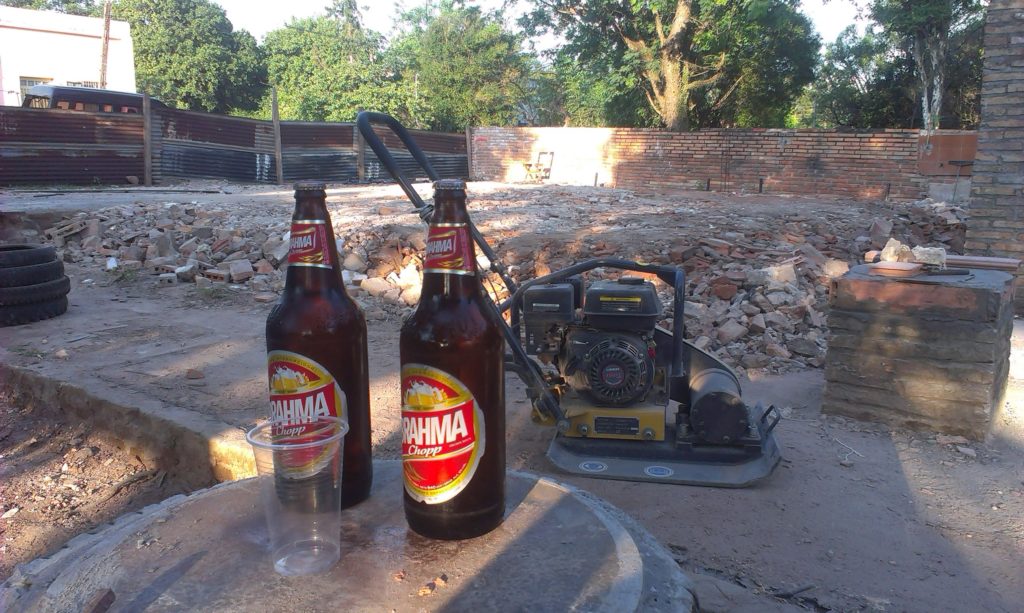The decision to build with containers was taken. The basic layout was defined. I just needed to make it happen.
In my absence between 2014/2015 I agreed with Ramon that he would build back part of the building, saving as much building material as possible:
- wooden posts
- corrugated metal roofing
- roofing tiles
- bricks
- doors
- windows
Once on site in Oct 2015 it was time to prepare the site:
- take down the rest of the buildings
- mark out and prepare the foundations
- preparing the septic system
- finding 4 40 feet HC containers
- installing the containers
Take down the rest of the buildings
Everybody seemed to have some fun tearing down a building. Even my neighbour was eager to take down a wall with his truck:
We had a lot of debris, which partially was collected by villagers to used it at their construction site to fill in house slabs.
Mark out and prepare the foundations
I was happy to have some laser level although I had to wait for the dark to be able to use it. also the rotary part was damaged but it wasn’t too difficult to get some custom repair part done on a local lathe shop.
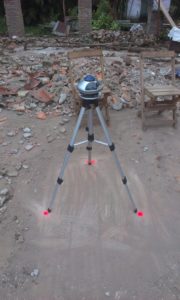
A positive coincidence was to find out my columns I had build in regards tot he original plan of house extension would perfectly align with my new containers. I ‘cut’ down the outer 2 columns and concert them into foundations.
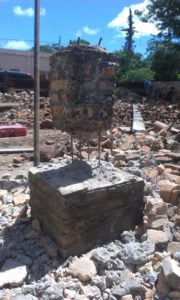 As the terrain has a slight slop and in my design was most back container was around 18m into the lot, I had to prepare corner foundations coming about 1m over ground level. We got creative and used old tires as formwork
As the terrain has a slight slop and in my design was most back container was around 18m into the lot, I had to prepare corner foundations coming about 1m over ground level. We got creative and used old tires as formwork
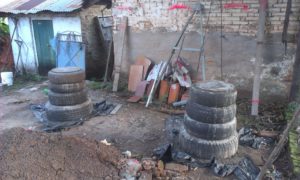
Septic chamber
On the country side here is no canalisation available. You have to build your own septic system to treat your black water. The common way to do it is to build 2 chamber:
- the water proof septic chamber where the solids will settle and decompose over time. If build big enough, you shouldn’t have to pump it out ever, so the theory
- a leach chamber; liquid overflow from the septic chamber flows into here and leaches into the soil. the theory says that the soil acts as an active filter and after 8 meters the water is cleaned eg safe.
I plan to avoid having black water all together by planning to used composting toilets. But I also wasn’t ready yet to omit a septic system all together.
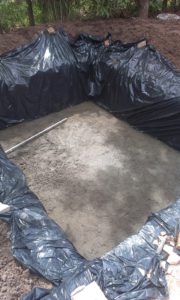
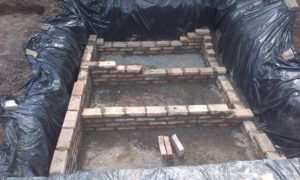
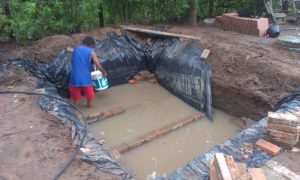
The rain turned our construction site almost into a pool 🙂
Finding 4 40 feet HC containers
In 2015 container weren’t as fashionable in Paraguay as construction elements as they are today. I found an import company who would buy container in Germany, import theirs goods and then sell the containers. I was lucky enough that they had some incoming containers right when I was looking for some.
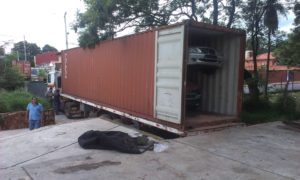
It was a done deal and I also got hold of a company doing the transportation to sapucai with a pal-finger. Unfortunately on the day of the transportation heavy rains started and we couldn’t place the containers at their designated place; the terrain was getting too soft. We had to leave the 4 containers on the street. The rain actually continued about a week. As a result the container stayed around on the street for over a week, starting some interesting rumours about what I might be building/doing with them

Installing the containers
After a week the weather turned nicer again and I had organised another pal-finger to finish the work.
This was one those magic moments when after days/weeks/months of tearing things down, working in dust and debris… within a very short time period the energy and atmosphere of your construction site changes dramatically and your vision really becomes visible.
